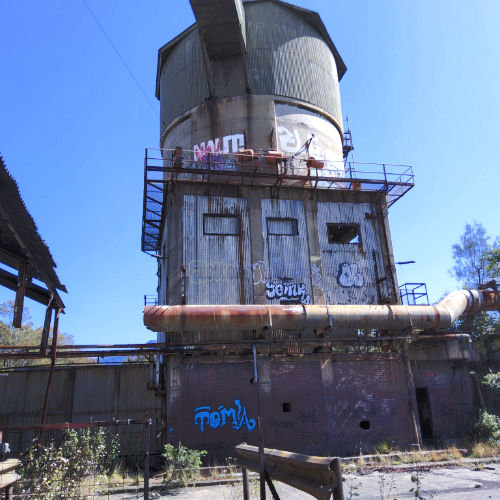
CORRIMAL COKE WORKS
Demolition of a derelict Coke Manufacturing facility around heritage structures, residential community and railway station.
INTRODUCTION
Legacy Property is developing the 18.2 hectare former Corrimal Cokeworks Site, located in the northern suburbs of Wollongong. The Site is strategically located adjacent to Corrimal train station and presents a unique opportunity to transform this now derelict industrial site into the most desirable new residential precinct in the Illawarra region.
The concept master plan proposes approximately 550 dwellings comprising a mix of low-midrise apartments and medium density dwellings.
The first phase of the project commenced in November 2023, included the detailed demolition of the existing Coke Manufacturing facility whilst retaining elements listed as either local or state significance.
THE CHALLENGE
The challenge was clear, demolition needed to be undertaken whilst maintaining the structural integrity of adjacent heritage structures. Various elements needed to be salvaged from within the structures, prior to the demolition of the structure. Salvage methodologies had to be approved by the Heritage consultant and many elements proved difficult due to the dilapidated condition of the building or large elements contained flammable coal material within, which which made hot works (oxyacetylene cutting) difficult.
The lack of historical data such as engineering plans and drawings for assets and underground services had required further investigations by the demolition contractor to assess the most feasible methodology to safely demolish the existing structures.
Significant volume of coke materials which were left within existing structures from the shutdown of the Corrimal Coke Works which proved to be a high risk to environmental issues.
THE APPROACH
Our approach was innovative and comprehensive. Firstly, the existing condition of the structures housing elements to be salvaged were documented via the use of drones both above and underground due to the safety risk of sending personnel into confined space or structures at height to conduct investigations and documentation.
Detailed Engineering calculations were undertaken prior to demolition of the structure prior to any mechanical demolition such as top-down or induced-collapsed approach if adjacent to heritage structures. Vibration monitors were installed at proximity of heritage assets to ensure the selected method was appropriate to the location. If it was calculated that the vibration would exceed the 5mm/s tolerance levels, the structure would be cut and lifted out in sections using mobile crane.
We had also explored recycling and reuse options of construction and demolition materials to reduce the need for disposing materials offsite at a licensed facility. Demolished materials were tested intensively for any contamination prior to being recycled or reused. All steel including heavy and light gauge were recycled at a steel recycling facility.
Where the vibration from an induced collapse operation was calculated to be under the threshold, a cushion of demolished material such as conveyor belt, wheel tires, demolition rubble was built to further reduce the vibration radiating from the drop zone. The drop angle was devised by the project engineer and structural engineer and directed by the demolition supervisor to ensure shock absorption reduces the vibration on impact.
Dust monitoring was installed around the sensitive areas such as residential buildings and Corrimal station side located on the east of the site as environmental controls to measure dust generation during the demolition activities.
All demolition methodologies were discussed collaboratively with the Demolition contractor to create a holistic solution that tackled each challenge head-on as no 2 buildings were the same.
RESULTS AND BENEFITS
The results speak volumes: There were no exceedances on the vibration and dust monitors and no complaints from the surrounding residential community during the demolition stage were received.










